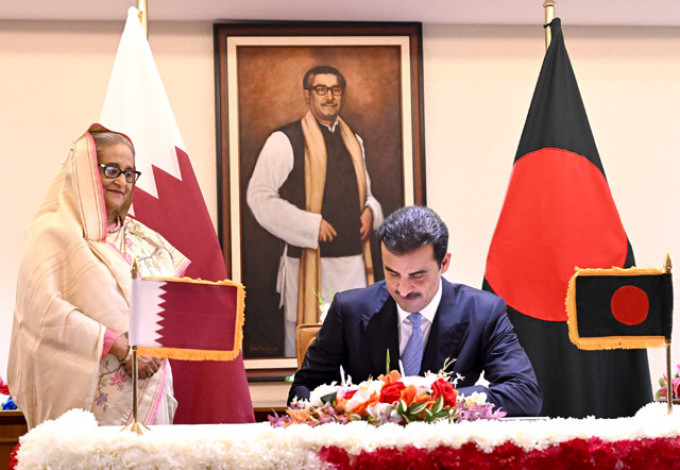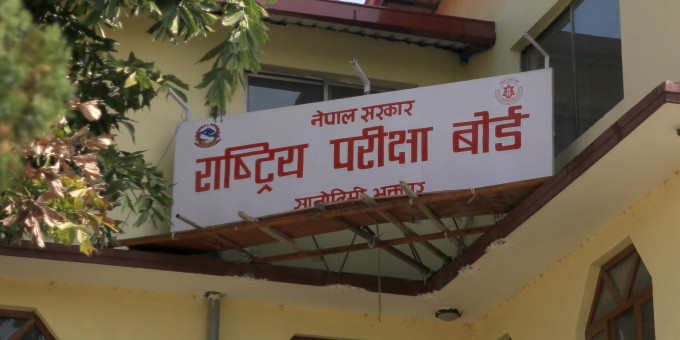The lines stretch for miles outside gas stations in Syrian cities, with an average wait of five hours to fill up a tank. At bakeries, people push and shove during long, chaotic waits for their turn to collect the quota of two bread packs a day per family.
On the streets in the capital of Damascus, beggars accost motorists and passers-by, pleading for food or money. Medicines, baby milk and diapers can hardly be found.
As Syria marks the 10th anniversary Monday of the start of its uprising-turned-civil war, President Bashar Assad may still be in power, propped up by Russia and Iran. But millions of people are being pushed deeper into poverty, and a majority of households can hardly scrape together enough to secure their next meal.
With Assad preparing to run for a fourth seven-year presidential term in the spring, some have questioned whether he can survive the sharp economic deterioration and anger in areas under his control. Poverty levels are now worse than at any point throughout the 10-year conflict.
“Life here is a portrait of everyday humiliation and suffering,” said one woman in Damascus. Her husband lost his job at an electronics store last month, and now the family is drawing on meager savings that are evaporating fast. The woman said she had taken up teaching part-time to help make ends meet. Like others, she spoke on condition her identity remains hidden, fearing arrest.
With two kids and an elderly father to care for, she said life had become unbearably difficult and she is gripped by anxiety for the future. Until recently, she could smuggle in her father’s medicines from Lebanon,FILE - In this April 16, 2018 file photo, Syrian authorities distribute bread, vegetables and pasta to residents in the town of Douma, near Damascus, Syria. As Syria marks the 10th anniversary Monday, March 15, 2021, of the start of its uprising-turned-civil war, President Bashar Assad may still be in power, propped up by Russia and Iran. But millions of people are being pushed deeper into poverty, and a majority of households can hardly scrape together enough to secure their next meal. (AP Photo/Hassan Ammar, File)
“I go to the souk and really have to think of priorities, buying only the bare necessities for cooking. I try not to look at the other stuff my children might like,” she said.
The decade of war has wreaked unfathomable destruction on Syria. Nearly half a million people have been killed and more than half the pre-war population of 23 million displaced, whether inside or outside the country’s borders, the world’s worst displacement crisis since World War II. Infrastructure is in ruins.
Through most of the conflict, Assad was able to shield Syrians in government-held territory from unbearable economic pain. Even if barely sometimes, the state kept fuel, medicine and other supplies coming and the currency propped up.
Now he has gained a decisive upper hand in the war with Russia and Iran’s help, his grip on areas under his control is unquestioned, and the rebellion is largely crushed.
But the economy has fallen apart with startling swiftness. It was hit by a double blow of new, far-reaching U.S. sanctions imposed last year and the financial meltdown in Lebanon, Syria’s main link with the outside world. That proved too much, on top of the strains of war, government corruption, other Western sanctions in place for years and the coronavirus pandemic.
The United Nations says more than 80% of Syrians now live in poverty, and 60% are at risk of hunger. The currency has crashed, now at 4,000 Syrian pounds to the dollar on the black market, compared to 700 a year ago and 47 at the beginning of the conflict in 2011.
“When you put all of these things together, there is no surprise that we are seeing rising food insecurity, rising hunger,” said Arif Hussein, chief economist at the U.N. World Food Program. “Not only in the breadth, meaning lots and lots of people, but also in the depth, meaning people are closer to starvation today than ever before.”
Residents of government-held areas who spoke to The Associated Press paint a grim picture. Prices go up several times a day. Families now rely on electronic “smart cards” to secure subsidized and rationed goods that include fuel, gas canisters, tea, sugar, rice and bread. To collect them, they wait in long lines, often pushing, shoving and fighting.
At gas stations, some park their cars at night to claim a place in line and come back early in the morning to fill their cars. Residents carpool or walk whenever possible, to avoid wasting fuel.
READ ALSO:










